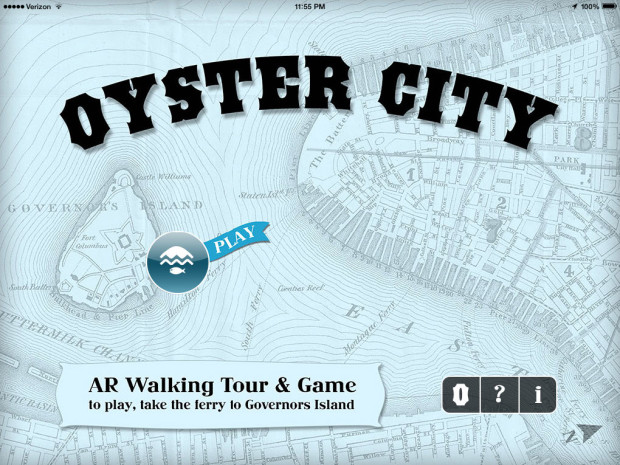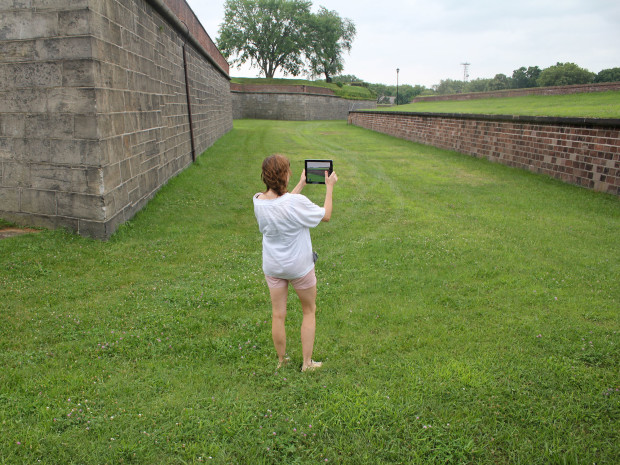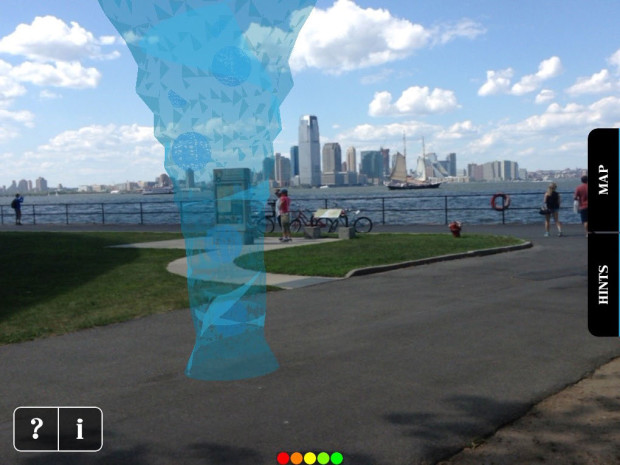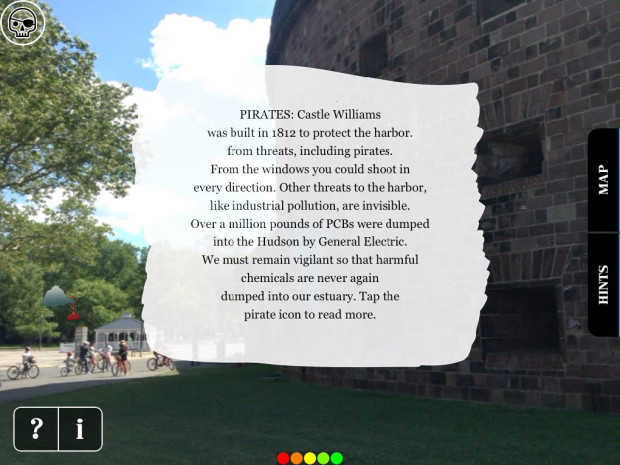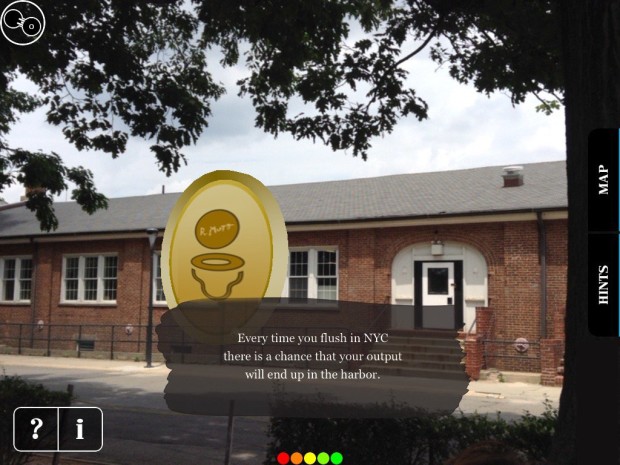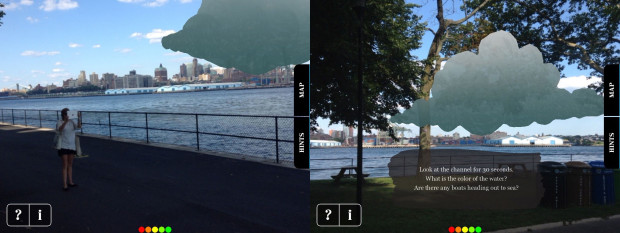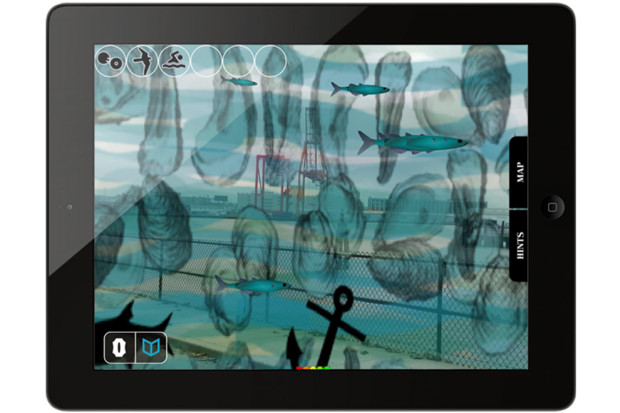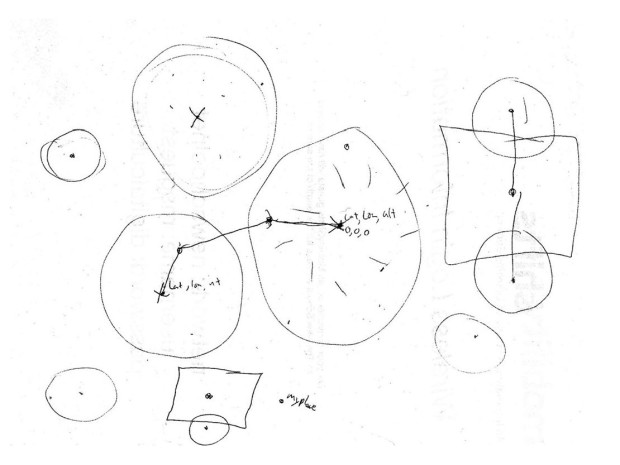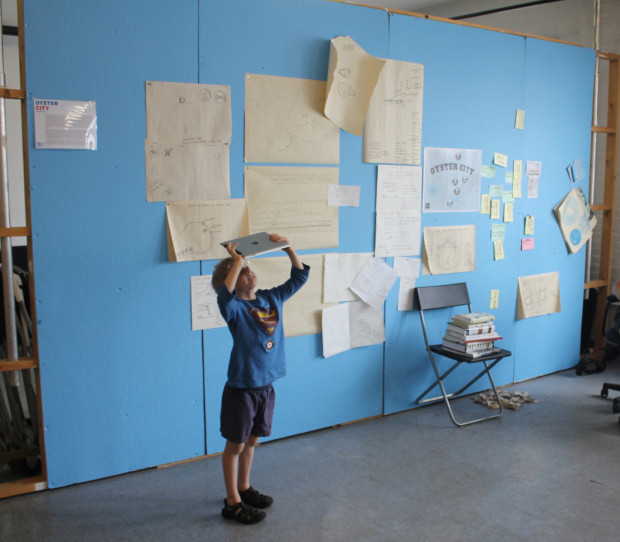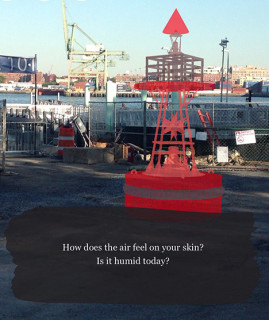Oyster City landing screen
Player on Governors Island
Player approaches whirl
Short text for Castle Willams
Player collects the “Creative Output” coin by the bathrooms at the LMCC arts building.
Player nears a hint-giving cloud (+ seen through another players camera)
Player has unlocked the immersive oyster reef that animates around her.
Drawing of possible interactions between player and AR objects
Research wall and beta tester
AR Walking Tour / Game App
in collaboration with Meredith Drum
Made with original software, Palimpsest, by Phoenix Toews.
For iPad / Apple iOS
The Oyster City Project website
==
Oyster City is an augmented reality walking tour and game that tells the story of the demise and resurgence of oysters in New York City and surrounding estuaries as it relates to larger natural and urban ecologies. We populated Governors Island with AR elements (3-D virtual objects visible through the camera on a mobile device, audio and texts) enabling participants to learn and play as they interact with their immediate environment. Players follow geo-located clues to collect up to ten coins, each with a narrative about a specific site, and unlock an immersive oyster reef. The bulk of the game was created while in residence at LMCC’s Building 110 at Governors Island from March – July, 2013.
Oyster City is made in collaboration with Meredith drum and uses Palimpsest, original software developed by Phoenix Toews. Palimpsest enables not only GPS placement of text, images and sounds, but also touch, orientation, and movement events, allowing the participant to act as a performer as well as a viewer. A fully functional beta, Palimpsest currently works on current iPhone and iPad. The framework will be released as an open-source project.
When Henry Hudson sailed into the bay in 1609, 350 square miles of wild oyster beds surrounded Manhattan and adjacent islands. NYC became the world’s largest producer of oysters until industrial pollution and over harvesting depleted the oyster population in the late 19th and early 20th centuries. Tracing how oysters were cultivated, monetized, distributed, consumed and depleted reveals interconnections between ecological, social and economic systems. Recent interest in cultivating oyster reefs is playing a role in the regeneration of shoreline ecosystems and water quality. Our project explores how storytelling forms operate when embedded in space and place and how user experience must be reconsidered when narrative is situated, embodied, mobile and mediated with proprietary technologies.
Oyster City has been presented at Mobility Shifts: An International Future of Learning Summit, The
New School, NYC, 2011; I-docs 2012, Bristol, UK; ISEA 2012: Machine Wilderness, Albuquerque, New Mexico, 2012; Women in Art and Technology, Arizona State University Art Gallery, 2014; Visible Evidence 22, Toronto, 2015. It appears in Paul Lester’s textbook Digital Innovations for Mass Communications: Engaging the Users published by Routledge, 2013 and in xtine burrough’s book Foundations of Digital Art and Design, New Rider Press, 2013.
rough video documentation
password: estuary
THANKS: Lower Manhattan Cultural Council Building 110 Swing Space residency on Governors Island

